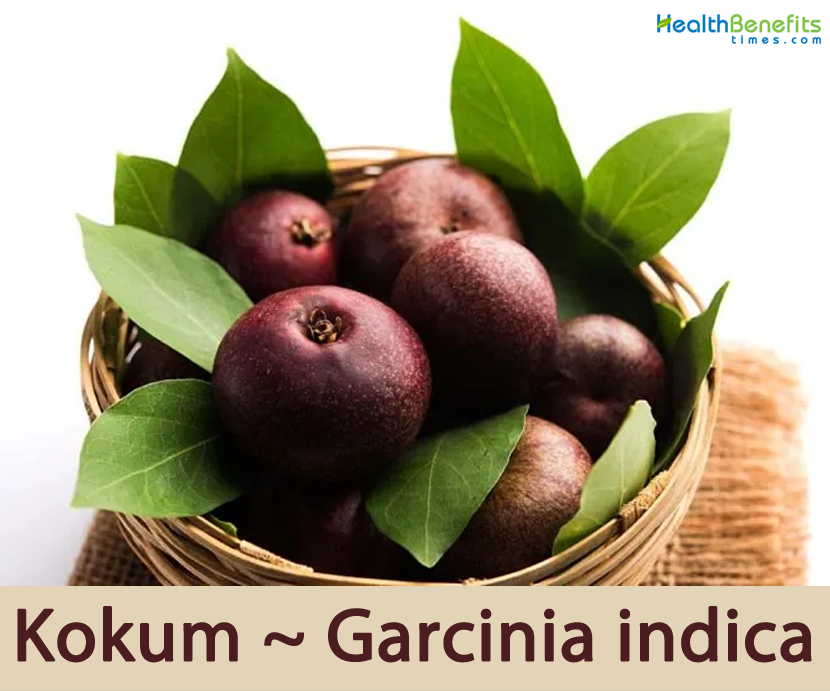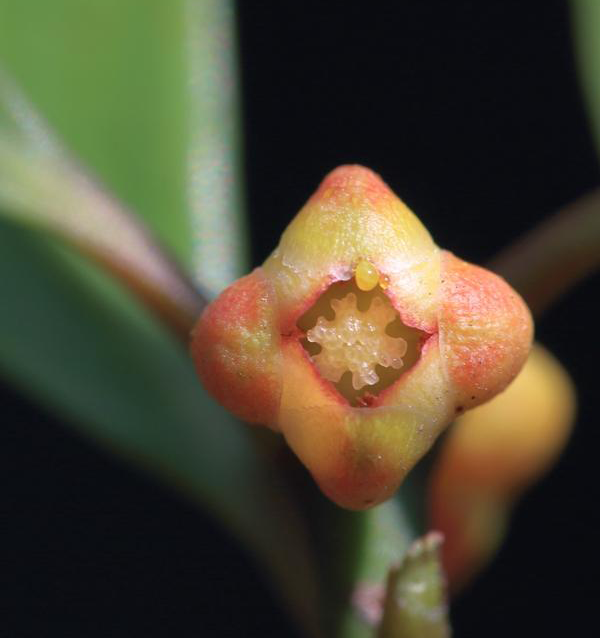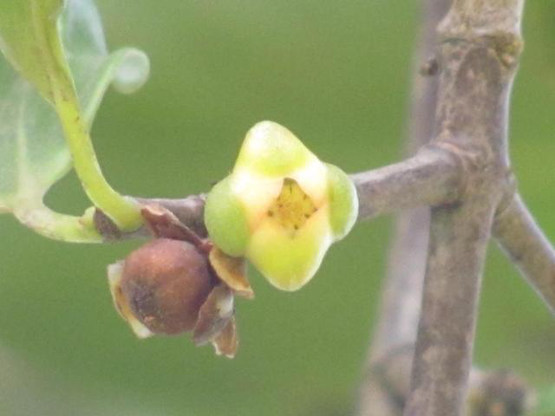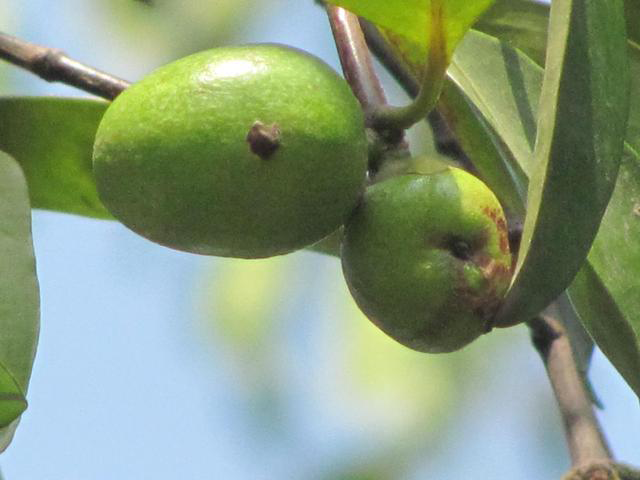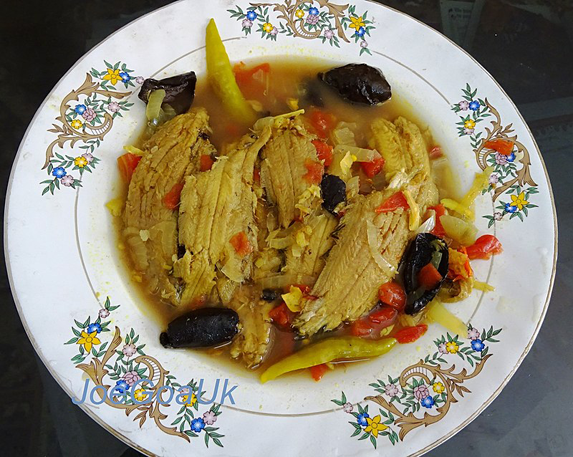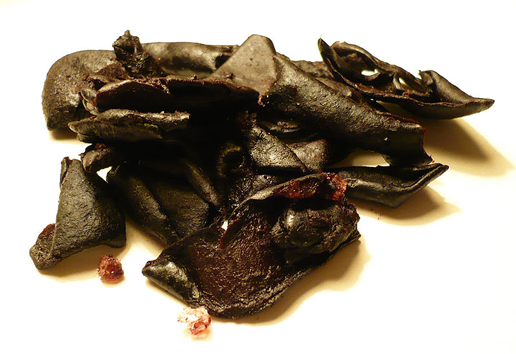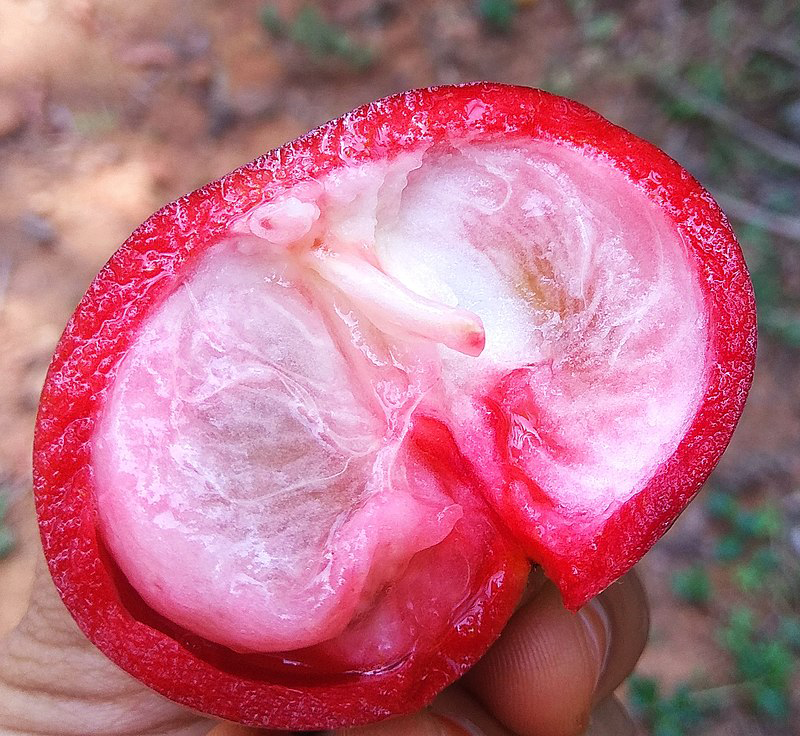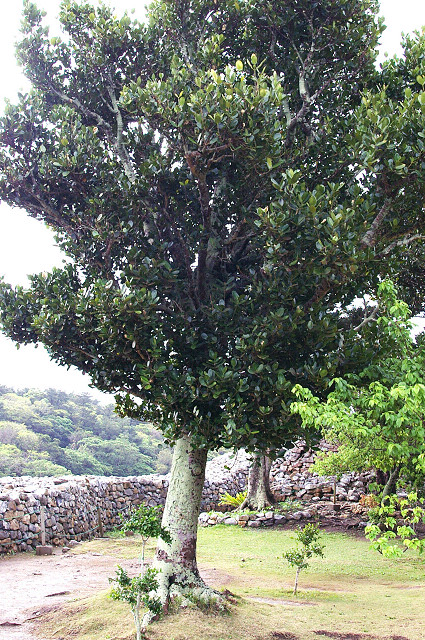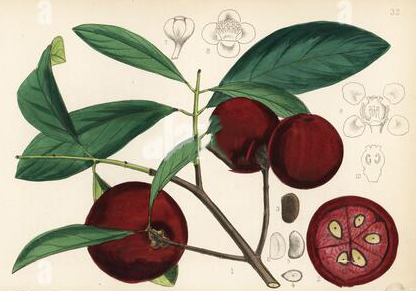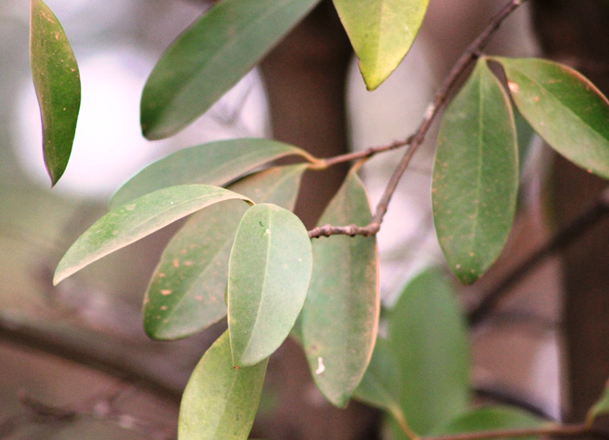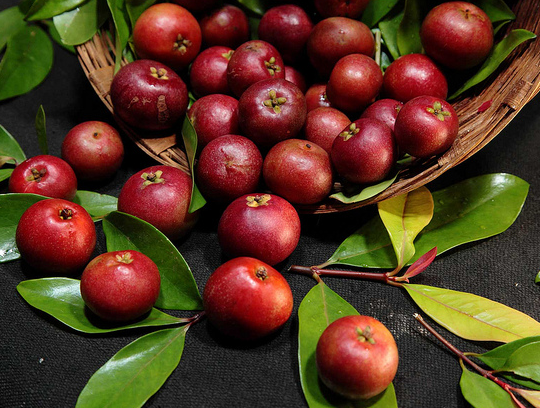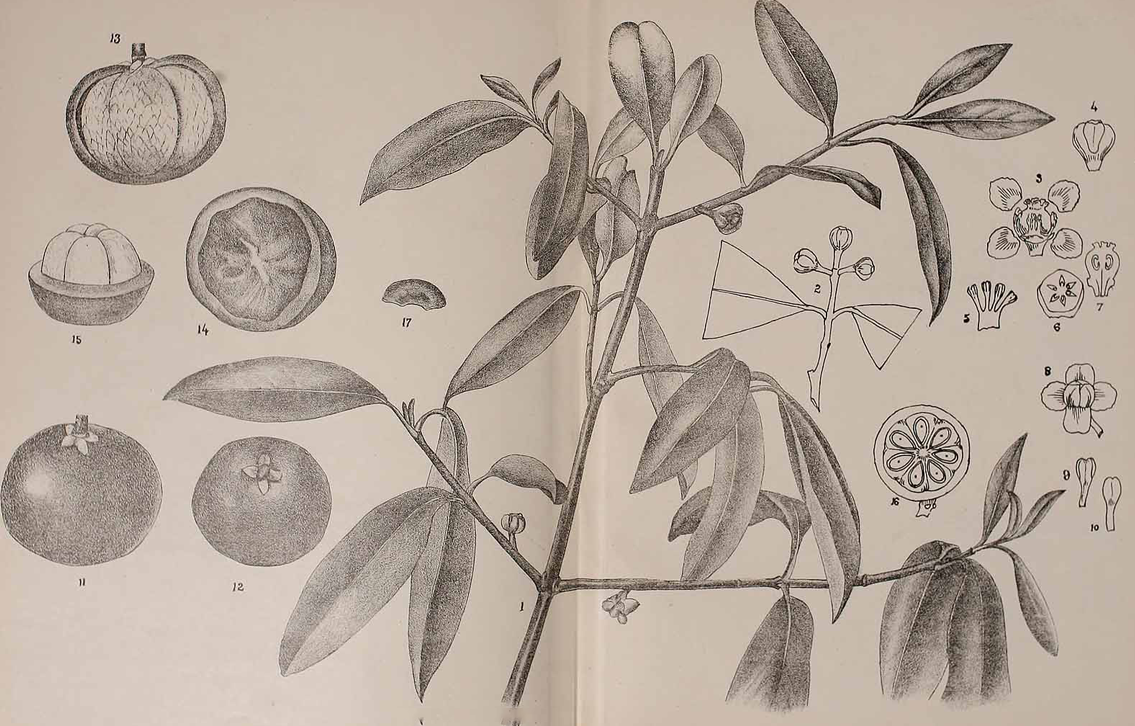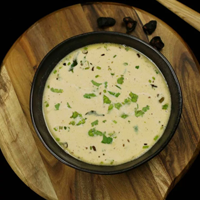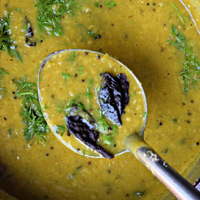| Kokum Quick Facts | |
|---|---|
| Name: | Kokum |
| Scientific Name: | Garcinia indica |
| Origin | Asia, South Africa and Polynesia. It is widely distributed along the Western Ghats of India and also found in the forests of Assam, Meghalaya and West Bengal. |
| Colors | Dark to light green when raw and crimson red with a yellow tinge to dark violet or purple when fully ripe |
| Shapes | Round, oblong or oval fruit with pointed tips and, are crowned by the four parted stalk less stigma. They are 3 to 4 cm (1.2 to 1.6 in) in diameter |
| Flesh colors | Whitish color |
| Taste | Sour, bitter, salty and sweet |
| Health benefits | Immunity Booster, Weight Management, Improved Intestinal Health, Moisturizes the Skin, Good for the heart, Fight cancer, Improve the PMS, Alleviate Anxiety and Depression, Cracked heels, Improves Digestion, Elevates the Mood, May Have Anti-allergenic Property, Protect the Liver, Heals Cuts, Wounds, and Swelling, Relieve Excess Flatulence, Beneficial For Diabetics, Cures Inflammation, Oxidative stress, Improve Cognitive Health, Reduces Gastric Ulcer, Remedy for Acidity, Protect against tumors, Skin irritation, Cure Piles, Cure Burns, |
| Name | Kokum |
|---|---|
| Scientific Name | Garcinia indica |
| Native | Asia, South Africa and Polynesia. It is widely distributed along the Western Ghats of India and also found in the forests of Assam, Meghalaya and West Bengal. In the Western Ghats, the tree is mainly found along the costal belt of Konkan region of Ratnagiri district of Maharashtra, Goa, Uttara Kannada, Udupi and Dakshina Kannada Districts of Karnataka and Kasaragod area of Kerala |
| Common Names | Brindonia tallow tree, Indian gamboge, Kokam butter tree, Mangosteen oil tree, Red mango tree, Goa-Butter, Indian Berry, Indian Tallow Tree, Kokam Butter, Kokum, Mangosteen, Wild mangosteen, Goa butter tree, Indian butter tree and Kokam |
| Name in Other Languages | Arabic: Kokam (كوكام), gharsaniat hindia (غرسنية هندية) Assamese: Prangso-arong Azerbaijani: Hindistan qarsiniyası Belarusian: Hartsyniya indiysʹka (Гарцынія індыйская) Bengali: Mahada (মহদা) Bulgarian: Indiĭska gartsiniya (индийска гарциния) Chinese: Téng huáng guǒ (藤黄果) Dutch: Brindall English: Brindonia tallow, Indian tallow tree, Goa-butter, Indian berry, Kokam, Kokum, Red mango, Garcinia, black kokum, cocum French: Brindonnier German: Kokam Greek: Garkinía i indikí (Γαρκινία η ινδική) Gujarati: Kokan, Kokama (કોકમ) Hindi: Bhirand kokum, Kokam, Ratambi, Indian butter tree, kokum, Vishambil, Kokum (कोकम) Indonesian: Kokam Italian: Cocum Japanese: Garushinia indika (ガルシニア・インディカ), Garushinia (ガルシニア) Kannada: Dhupadamara, Murgala, Murginahulimara, Ratambi, Tittidika, Koka Mara, Murgina huli (ಮುರ್ಗಿನ ಹುಳಿ), Punarpuli (ಪುನರ್ಪುಳಿ), Devana huli, Muragalu (ಮುರಗಲು), Mugal (ಮುಗಲ್), Murugala haṇṇu (ಮುರುಗಲ ಹಣ್ಣು), amasole gida, amasolu, bherunda, devana huli, dhoopada mara, dhupadamara, kethae huli, kokum mara, kokum thaila, mugal, murgal, murgala, murghuli, murgina huli, murgina hulimara, murginahuli, murginahuli-mara, murinahuli, murugalu, muruvana huli, muruvina, punarapuli, punarpuli Konkani: Bhirind (भिरींड), kokam (कोकम) Korean: Kokam (코캄) Malayalam: Kokumbrindeo, Punampuli, Punampuli, kaattampi (കാട്ടമ്പി), keākkaṁ (കൊക്കം), kēākaṁ (കോകം) Marathi: Bhirand, Kokam, Kokambi, bheranda (भेरंड), bhiranda (भिरंड), kokamba (कोकंब), kokambi (कोकंबी), ratamba (रातंबा), ratambi (रातंबी), tambada amba (तांबडा आंबा), aamkola, amsole, bhinda, bhiran, bhirand, chirand, katambi, kokam, punampuli, ratamba, ratambi, Āmasūla (आमसूल) Oriya: Tintali Portuguese: Brindoeiro, manteiga-de-goa Punjabi: Kokuma (ਕੋਕੁਮ) Russian: Gartsiniya indiyskaya (гарциния индийская) Sanskrit: Vrikshamla (Vrichhamala), Amlashaka, Amlavrikshaka, Atyamala, Bijamla, Chudamala, Chukramla, Chukraphala, Vr̥kṣāmalā (वृक्षामला), Vrikshamia, Amlabija, Amlapura, Amlashaka, amlavetasa, amlavriksha, amlavrikshaka, chukra, phalamlah, phalamlaka, puramla, raktachudah, raktapuraka, rasamla, sakamlah, shalamla, shreshthamla, tintidika, tittidiphala, vrikshamla, vrksamla, vrksamlah, vruksamlah Sinhala: Goraka Spanish: Cocum Swedish: Cocum Tamil: Bhiranda, Murgal, Murgal-mala, Murgalli, murgal-mara, murukal (முருகல்) Telugu: Chinta (చింతా) Tibetan: Da tri ga (p), da tri gi Tulu: Punarpuli |
| Plant Growth Habit | Slender, evergreen, perennial, monopodial and tall growing tree or shrub |
| Growing Climates | Evergreen forests to semi-evergreen forests, forest lands, riversides, wasteland, hill slopes, forest regions, rocky plateaus, roadsides, farm bunds and stream banks |
| Soil | Grows well in lateritic, alluvial, well drain soil |
| Plant Size | Up to 20 m (66 ft.) tall. However, it is more typically 10 to 15 m (33 to 50 ft.) tall |
| Bark | Bark is dark grey or dark brown, scaly, rough and sometimes mottled by lichens, mosses and algae |
| Leaf | Leaves simple, opposite or rarely ternate, lanceolate-ovate to oblong-oblong, about 5.5-8 cm long and 2.5-3 cm broad, base acute to obtuse, margins entire, apex acute to acuminate, chartaceous, leathery, coriaceous, glabrous on both sides, with translucent glands, midrib impressed above and prominent beneath |
| Flowering season | November-February |
| Flower | Flowers are small, 4-5 merous, heterochlamydeous, dioecious, pseudo-bisexual with fleshy, waxy pink petals and with female and male flowers on separate trees. They are borne directly on the stems, singly or in clusters of up to four and bloom in the dry winter season. |
| Fruit Shape & Size | Round, oblong or oval fruit with pointed tips and, are crowned by the four parted stalk less stigma. They are 3 to 4 cm (1.2 to 1.6 in) in diameter. The fruits are grow up to the size of a lemon |
| Fruit Color | Dark to light green when raw and crimson red with a yellow tinge to dark violet or purple when fully ripe |
| Flesh | Whitish acidic |
| Shelf Life | Approximately a week |
| Taste | Sour, bitter, salty and sweet |
| Plant Parts Used | Root bark, fruit, seed oil |
| Propagation | By seed, grafting and root suckers |
| Season | April to May |
| Products using Kokum butter |
|
| Health Benefits |
|
Plant Description
Kokum is a slender, evergreen, perennial, monopodial and tall growing tree or shrub that normally grows to heights of up to 20 m (66 ft.). However, it is more typically 10 to 15 m (33 to 50 ft.) tall with a slim, low-branching trunk supporting a densely leafy pyramidal crown. The bark is dark grey or dark brown, scaly, rough and sometimes mottled by lichens, mosses and algae, which thrive in the humid conditions in which the tree grows. The plant is found growing in evergreen forests to semi-evergreen forests, forest lands, riversides, wasteland, hill slopes, forest regions, rocky plateaus, roadsides, farm bunds and stream banks. It grows well in lateritic, alluvial, well-drained soil.
Leaves
Leaves simple, opposite or rarely ternate, lanceolate-ovate to oblong-oblong, about 5.5-8 cm long and 2.5-3 cm broad, base acute to obtuse, margins entire, apex acute to acuminate, chartaceous, leathery, coriaceous, glabrous on both sides, with translucent glands, midrib impressed above and prominent beneath, lateral veins irregular with parallel short veins between, vein lets reticulate, petiole slender with raised margins, exstipulate, rarely stipulate. They are crimson red and soft when they emerge, becoming dark glossy green with a leather texture. They are arranged in pairs along stems, they remain on the tree in all seasons.
Flowers
Flowers are small, 4-5 merous, heterochlamydeous, dioecious, pseudo-bisexual with fleshy, waxy pink petals and with female and male flowers on separate trees. They are borne directly on the stems, singly or in clusters of up to four and bloom in the dry winter season. Flowering normally takes place in between November and February.
Fruits
Fertile flowers are followed by round, oblong or oval fruit with pointed tips and, are crowned by the four parted stalk less stigma. They are 3 to 4 cm (1.2 to 1.6 in) in diameter. Initially kokum fruits are dark to light green in color turning to crimson red with a yellow tinge to dark violet or purple when fully ripe. The fruits grow up to the size of a lemon. An average kokum tree bears hundreds of fruits and each fruits weigh around 21–85 g. Kokum fruit contains three to eight large seeds and is covered with juicy, whitish pulp which delicious in taste and odor. Seeds are usually connected to the rind by tissue and embedded in a red acidic pulp similar to that in orange. Ripe fruits are sour in taste and have a short shelf life of approximately a week. High content of malic acid and little amounts of tartaric and citric acids give pleasant tart taste to the fruit. At present, India produces 10,200 metric tons of Kokum with productivity of 8.5 tons/ha.
Seed amounts to nearly a quarter of the total fruit weight and chemical studies have shown that it contains 40-42% oil. Oil remains solid at room temperature and is known askokum butter which is light gray to yellow in color, greasy in texture and is bland to taste. The kokum seeds are first decorticated and the kernels are carefully separated. Kernels are then pressed in expeller to extract oil. Cake left after extraction of the kokum butter may be used as cattle feed as well as organic manure for plantation crops.
Health benefits of Kokum
Kokum is rich in nutrition. 100 grams of Kokum provides 60 calories of energy. Though Kokum is low in calories and fats, it is rich in fiber and provides around 2 grams of fiber per 100 grams. It also contains vitamin A, vitamin B3, vitamin C, folic acid, calcium, iron, potassium, magnesium, manganese and zinc. Acetic acid and Hydroxycitric acid are also present in kokum. Listed below are some of the common health benefits of Kokum
1. Immunity Booster
Research has concluded that kokum can also be used to improve immunity. People with weak immunity can include kokum in their diet in the form of fruit or juice. The properties present in it can be beneficial for improving the immunity of the body. In such a situation, it can be said that due to weak immunity, kokum can be considered beneficial for people who fall ill again and again.
2. Weight Management
Kokum consists of a compound called HCA (Hydroxycitric acid) which acts as an appetite suppressant. Kokum can aid in weight loss is because of its high fiber content. Drinking a glass of refreshing Kokum juice not only makes one feel full but satisfied too. Kokum also reduces the conversion of carbohydrates to fats thus making it a highly effective ingredient for weight management.
3. Improved Intestinal Health
The sweet, tangy, and highly refreshing kokum sherbet can play an essential role in improving intestinal health. Patients suffering from acidity and indigestion are known to benefit immensely from drinking this beverage.
4. Moisturizes the Skin
Kokum butter has excellent emollient properties. Additionally, its healthy fatty acids improve the moisture barrier of the skin. Maintaining a healthy barrier on your skin is important to keep it supple and hydrated.
Kokum butter is also said to protect your skin from cell damage and restore its elasticity. Hence, it is used in a variety of cosmetic products, such as lotions, creams, lip balms, and soaps.
5. Good for the heart
Heart disease is known to be the biggest reasons for high mortality rates around the world. It affects both men and women. Heart trouble could result from a build-up of plaque in the arteries to angina, arrhythmia, or stroke.
Kokum is known to be a marvelous cardio tonic which decreases the levels of triglyceride and brings down the risks which are linked to coronary heart disease. Polyphenols such as hydroxycitric acids and garcinol, the active ingredient in kokum, are known to protect the heart due to their anti-inflammatory properties.
6. Fight cancer
Kokum juice can prevent cancer because the element garcinol in kokum prevents the growth of cancerous cells. It is an anti-carcinogenic element that helps prevent pancreatic, prostate, and breast cancer.
Cancer is caused by the abnormal proliferation of cells that invade other parts of the body. The mutated cells divide rapidly to destroy healthy tissue. Any ingredient which is anti-carcinogenic, such as garcinol, will stop these cells from proliferating further.
7. Improve the PMS
Kokum is also one of the good fruits to help with any PMS syndrome. As many women experience menstrual cramps or a headache during PMS, consuming kokum will help bring a better condition. Also, the cool feeling inside the stomach after consuming the fruit will lead to a calm stomach during PMS. This is the reason why it is suggested to consume kokum squash while you have any hard PMS syndrome.
8. Alleviate Anxiety and Depression
Anxiety and mental fatigue are increasing with stressful jobs, working parents, financial burdens, and relationship issues. Low levels of serotonin in the body are associated with depression and anxiety. Serotonin is found in the blood, brain, and bowels and it is associated with social behavior and mood regulation. The hydroxy-citric acids in kokum can increase this hormone and ease anxiety and stress levels.
9. Cracked heels
Kokum is great for dealing with broken heels. The nutrient content that appears to be good for skin health will help heal the heels and stimulate the formation of new skin cells. Applying the kokum on the heels frequently will result in a smoother surface of the cracked heels and lead to a faster recovery.
Remedy: Take 50 gram Adina Cordifolia Oil, 50 gram Kamala Oil, 50 gram Bergenia Oil, 50 gram Indian Madder Oil, 50 gram Dandelion Oil, 50 gram Vateria Indica Oil, 100 gram Aloe Vera Gel and 50 gram Dried, Powdered Kokum. Put all oils in a pan. Heat the combination on a low flame. After 15 to 20 minutes, add the remaining ingredients. Stir it time to time. When the mixture becomes thick, remove from the heat. Let it cool. Keep in a sealed bottle. Use it on cracked heels at night daily.
10. Improves Digestion
Kokum has also been known to improve digestion by soothing acid reflux and some of its symptoms like heartburn. In ancient Ayurvedic medicine, dried Kokum fruit has been used for ages to help with digestion and reduce the burning sensation caused in the stomach due to acidity. This dried Kokum fruit is often made into a juice and consumed after meals to both prevent as well as treat acidity (or acid reflux). Therefore, you can easily use this as a home remedy for indigestion and acidity.
11. Elevates the Mood
Kokum has also been observed to have significant effects on mental health. It can help to reduce anxiety, stress, and has a calming effect on the mind. This is because it promotes the production of a hormone called serotonin which is responsible for improving your mood. This also leads to the stimulation of the brain keeping your mind active and helping to reduce stress as well. You can also consume Kokum to help eliminate negative thoughts and lead a healthy as well as happy life.
12. May Have Anti-allergenic Property
If you apply Kokum directly to an allergic reaction or rash on the skin, its anti-inflammatory properties will help soothe that area and reduce swelling and itchiness. Additionally, when consumed, some of the organic compounds help reduce the release of histamine, thus lessening the severity of allergic reactions. For chronic allergies, you can regularly drink a cold infusion of Kokum.
13. Protect the Liver
Kokum juice reduces the levels of heat in the body. It slows down oxidative degeneration of the body’s lipids and protects the liver from deterioration and toxic chemicals.
14. Heals Cuts, Wounds, and Swelling
Research has shown that kokum has anti-inflammatory and anti-allergic properties. This is due to the presence of certain phenolic compounds in the kokum fruit. That is why kokum has several healing applications according to Ayurveda. It is said that applying kokum to any allergy sores, swelling, cracks, cuts, and even a burn injury can help to soothe and lessen the inflammation.
15. Relieve Excess Flatulence
One of the most embarrassing and uncomfortable conditions for many people is being bloated and gassy. Having excess flatulence is often a symptom of a poor diet or less than optimal functioning of your gut. It can help to relieve that pressure and reduce flatulence, as well as gastric distention. Having a chronic gas can be dangerous as well as awkward, so act quickly to solve it and add some Kokum to your diet!
16. Beneficial For Diabetics
Including kokum in your diet can be very good if you have been diagnosed even as borderline diabetic. Kokum helps in managing blood sugar levels because it consists of antioxidant and anti-diabetic properties. It is, thus, able to restore certain enzymes in the body that get reduced in the case of those who have type 2 diabetes. Nutrients and compounds in kokum also help to improve metabolism which means more effective digestion and better functioning of insulin, which is vital to keep blood glucose and diabetes in control.
17. Cures Inflammation
Organ inflammation in the body is related with a higher risk of cancer, arthritis, Alzheimer’s, and heart disease. Kokum juice has a powerful anti-inflammatory effect on the body. This is due to the presence of phenolic compounds in the fruit.
18. Oxidative stress
Kokum juice performs the compelling task of fighting oxidative stress in the body. Body cell oxidation causes it to age, and this leads to the body’s organs deteriorating. The antioxidant properties in kokum are known to prevent free radicals from causing damage to skin cells.
19. Improve Cognitive Health
One of the main chemical components of Kokum is garcinol, which is a powerful active ingredient that can prevent the oxidation of neurons in the brain, thus retaining neural pathways and preventing the plaque build-up that can lead to cognitive disorders. As there is no “cure” for conditions such as Alzheimer’s disease, these types of herbal or natural remedies are often used as preventive measure.
20. Reduces Gastric Ulcer Occurrences
One of the most common reasons for stomach ulcer is the action of Helicobacter pylori. Kokum sherbet benefits include protecting the stomach against ulcers. Anti-inflammatory drugs, alcohol, and spicy food can increase the acids in the stomach and accelerate ulceration. Garcinol fights the bacteria that cause inflammation and ulcer in the stomach. The cooling effects of kokum juice also calm the stomach lining which is irritated by acid pile up from various sources.
21. Loaded With Nutrients
The kokum fruit is a powerhouse of rich nutrients. Kokum is packed with many essential vitamins such as vitamin A, vitamin B3, vitamin C and minerals such as calcium, iron, manganese, potassium, and zinc. It also consists of a good amount of folic acid, ascorbic acid, acetic acid, hydroxy citric acid, and fiber. So from building your immunity to helping in weight loss and much more, this unassuming fruit is extremely nourishing to keep you in overall good health.
22. Remedy for Acidity
Kokum is an age-old homemade fix for acidity. Dried Kokum consumed in a sherbet or juice form can help reduce acidity. Simply add sugar, salt, and chilled water to dried Kokum to make delicious kokum sherbet to relieve acidity.
23. Protect against tumors
Consumption of kokum fruit can also actively show its properties to ward off tumors. Actually, anti-tumor activity is found in kokum fruit, which may prove useful in reducing the risk of developing tumors. In addition, tests done on rats have found that its consumption can help heal tumors on the skin. Of course, its results have been found to be good in tests done on rats, yet consume it only on the advice of a doctor.
24. Skin irritation
Kokum can also be seen for the treatment of inflamed skin. Using kokum fruit as a sorbent can help reduce skin irritation caused by the sun and other causes and help prevent skin damage. At the same time, kokum is also used in the cosmetic industry; kokum butter is used in a foot cream. However, due to which special properties it can help in this, scientific research is still going on. Therefore, it can be consumed after consulting a doctor.
25. Cure Piles
Kokum can be quite beneficial for reducing the risk of piles, as it has anti-piles properties. To cure this disorder, the fruit, peel, and leaves of the Kokum tree can also be used in the form of juice. More medical research is required in this regard. Along with this, medical treatment is also needed for the severe condition of piles.
26. Cure Burns
Kokum fruit can also be beneficial in case of burns. Kokum fruit can be used as an Ayurvedic medicine in case of burns. Remove the seeds of kokum and mix its pulp with curd and apply to the affected area. If the condition of the burn is more serious, then medical treatment must be done without delay.
27. For the mind
The benefits of kokum can also be achieved for the brain. Research clearly mentions that kokum has neuro-protective effects that keep the brain healthy and safe. It can be said that the use of kokum can be beneficial for the brain.
28. Make Balm
You can use kokum butter as a balm without doing anything to it. Raw kokum is safe to use directly on the skin surface. But because of its hard texture, it’s rather firm and inflexible.
For a softer texture, use a 1:1:1 balm recipe with equal parts wax, butter, and oil. The best waxes for pairing with kokum are beeswax, candelilla wax, and cera bellina wax. When it comes to essential oils, look for moisturizing and soothing options like avocado, chia seed, or sweet almond oil.
Traditional uses and benefits of Kokum
- Seeds yield the well-known oil or butter-called very useful for healing chaps on the body.
- Seed butter (oil) is used as a remedy in the treatment of dysentery and mucous diarrhea.
- The butter is applied externally to treat chaps and fissures of the lips.
- It has a soothing action and is used in the treatment of skin diseases.
- Ripe fruit is antiscorbutic, anthelmintic, cardio tonic, cholagogue, cooling, demulcent and emollient.
- Aqueous extraction from the fruits of this species is also used in order to reduce anxiety.
- Root, bark, fruit and the seed oil are used to treat piles, abdominal disorders, mouth diseases and worm infestations.
- Fruit is used in the form of juice to treat gulma, deficient digestion, thirst and diseases of mouth.
- Oily extract called Kokum butter is used in ointments and suppositories.
- It has application in skin and hair products, acne products and skin tonics.
- Rind of the fruit is a good source of hydro-xycitric acid which has been claimed to modify lipid metabolism.
- It was traditionally used for treatment of different health related problems like sores, dermatitis, diarrhea, dysentery, ear infection and to facilitate digestion.
- Kokum juice or sarbath is attributed to have properties to cure blood.
- Lots of anti-cancerous drugs have been identified from the fruits recently.
- Glass of juice made by putting the dry pericarp (fruit wall) overnight and consume it in the morning (empty stomach) is the practice among people in central Karnataka.
- Kokum has been used in traditional medicine to treat inflammation, dermatitis, and diarrhea, and to promote digestion.
- Kokum butter is an emollient helpful in the treatment of burns, scalds and chaffed skin.
- Extracts from the Kokum fruit are traditionally used to relieve gastric problems like acidity, flatulence, constipation and indigestion.
- Hydroxycitric acid present in the fruit fights cholesterol and curbs lipogenesis, thus aiding weight loss.
- Rind has medicinal purposes for the treatment of obesity, piles, dysentery, tumors, and heart complaints.
- Regular consumption of 30 ml Kokum juice brings relief in severe acidity.
- Consumption of Kokum juice helps in digestive issues likes flatulence, gaseous distention, constipation.
- It reduces fever and allergic conditions.
- It was traditionally used for treatment of different health related problems like sores, dermatitis, diarrhea, dysentery, ear infection and to facilitate digestion.
- Kokum fruit helps to fight against cancer, paralysis, ageing, obesity, ulcer etc.
- Kokum fruit is a good digestive tonic and used to overcome the skin related problems.
- Leaves are used to treat skin ulcers, dyspepsia and hyperplasia.
- Kokum is used in herbal medicines to treat diarrhea, inflammatory ailments, dermatitis, bowel problems, and rheumatic pains and to prevent hyper perspiration.
- Kokum juice from the rind is used against piles, colic problems, dysentery and diarrhea.
- Decoction of fruit rinds are traditionally used against diabetes.
- Kokum butter is used traditionally to heal wounds, fissures in hands and is supposed to restore elasticity of skin and used as a moisturizer.
Culinary Uses
- Ripe fruit is edible.
- Fruits are used in making, jellies, jams and juice.
- They can be eaten raw or made into syrup and vinegar.
- Dried fruits are used as a flavoring in curries etc., and for making acid-flavored beverages.
- Seeds are the source of oil called ‘kokam butter, which is solid at room temperature.
- It is often used as a food in India; it is also used for adulterating ghee or butter.
- It is used as an alternative to tamarind in curries and other dishes from south India.
- It is also used in cuisine from Gujarat, where it is frequently used to add flavor and tartness to dal (lentil soup) for flavor balance.
- It is extensively used in Assamese cuisine in many dishes like masor tenga (sour fish curry) and tenga Dali (sour dal).
- Fresh fruit is preserved with sugar to make bright-red squash that is diluted with water and bottled for sale as a beverage called Kokum Sarbat.
- It is added during the preparation of solkadhi, which may also include coconut milk, coriander and garlic.
- Ripened, rind and juice of Kokum fruit are commonly used in cooking.
- Dried and salted rind is used as a condiment in curries.
- It is also used as a garnish to give an acid flavor to curries and for preparing attractive, red, pleasant flavored cooling syrup.
- Kokum is used as an acidulant in different curries like traditional fish curries etc.
- Dried rind is also used to make a peculiar soup and cold drinks in summer.
- In some parts of India, rinds are spiced and sweetened with jaggery for feasts.
Different application in Food Industry
Shelf life of kokum fruits under ambient temperature is 4 -5 days and it can be extended up to 28 days if properly stored at 13°C temperature and 86% relative humidity. The following types of the products are prepared from the Kokum fruit.
Kokum Syrup
Kokum fruits have certain medicinal properties. Juice extracted from this fruit is sweet and sour and thus liked by many. A glass of cold kokum syrup is refreshing and it also improves the digestive system. The product is popular in the state since long and now it is sold in nearby states as well. Since it is a natural fruit extract, it is preferred by many people. In traditional method kokum rind is separated by removing fruit pulp and seeds. Pulp and seeds are not used for squash production. Equal quantity of sugar mixed with kokum rind in a wide mouth vessel. This mixture of sugar and kokum kept open for sun rays up to eight to ten days. In this process juice comes out from kokum rind and already sugar is mixed with juice. If balance sugar accumulation is found at the bottom of the vessel no additional sugar is to be added. Filter the juice and rind with the help of cotton cloth. This clean Kokum Syrup is to be filled in clean glass bottle. For long term preservation these filled bottles again kept sun light for another ten days without capping. You have to cap the bottles at end of process.
Kokum Agal (Kokum Juice Concentrate)
Kokum fruits are selected randomly and washed with clean water. The fruits are crushed and seed and pulp from the fruit is removed manually. Salt is added in the hollow space of the rind and the mixture of kokum rind and salt is kept in available plastic drum or container and is covered with cloth. Juice form the container is collected and filled in glass bottles of 750 ml to 1000 ml size. The color and quality of agal varies from location to location as proportion of slat used ranges from 10 to 20 per cent and it depends on the quality of fruits used and also on the person making it.
Kokum Sarbat
Kokum sarbat is prepared by using the kokum syrup. The water is added into kokum syrup at 1:5 proportions and some salt and cumin powder is added to make the kokum sarbat.
Kokum Solkdhi
Generally agal is ready to use for preparation of Solkadhi when mixed with coconut milk. In this process the grinded green chili, cumin paste, salt and jaggery depending upon how much sweetness we require are used for the preparation of kokum solkadhi.
Kokum Amsul (Dried Salted Rind)
Amsul is made from the peel of the fruits ‘Kokum’. Amsul is a fine ingredient in veg-dishes and curries for the sour taste also it is useful for skin boils and irritation, if rubbed against the irritated parts. In traditional process, fresh kokum fruit is washed properly and cut into two halves to separate the seed, pulp and the rind. The seed and the pulp are mixed with around 10 percent salt. The salt solution leached out from this mixture is used for the dipping of the separated rind. The rind then placed for sun drying during the daytime. The next day the dried sample is again dipped in the salt solution, which was leached on the second day from the salt seed mixture. Then the rind is again placed for drying. The process of dipping and drying is repeated for 4 to 5 times to get the amsul.
Kokum Butter
The fat is used mostly for edible purposes obtained by primitive methods is just off white, and free fatty acid levels are low indicating absence of any powerful lipolytic activity. Fat can be easily refined in the usual way, and bleached to a near white color in the conventional manner. Prompted by enquiries from foreign buyers and realizing its potential as a high value fat for export, oil millers have in the past decade, organized the collection of kernels and the fat is now recovered in a small way for export. The residual oil in the extracted cake is also recovered by solvent extraction.
Kokum Beverages
Kokum extract have approximately 4% sugar which can be fermented to produce high quality red wine. The extract from kokum can be converted to many health beverages and squash like products with sugar addition.
Kokum Sharbat Recipe
Ingredients
- 200 g Dry Kokum
- 4 cups Water
- 200 g Sugar
- ½ teaspoon Black salt
- 1 teaspoon Cardamom Powder
- 1 teaspoon Roasted Cumin Powder
- Salt to taste
Directions
- For 1-2 hours, soak the dry kokum in 4 cups of water.
- Mash it up nicely and strain it.
- Heat the leftover Kokum in a pan.
- Add sugar, black and regular salt, roasted cumin powder, cardamom powder, and cardamom pods.
- Simmer for 6-8 minutes until sugar melts.
- Then add the Kokum water to the pan and bring it to a boil. Cook for another five minutes. Take the pan off the heat and let it cool. Put the mixture in a glass bottle and store it in the refrigerator.
- To make the sherbet, combine 3 tablespoons of kokum concentrate with chilled water.
- Add a few ice cubes to the glass.
- Serve chilled
Kokum Curry ( Kokum Kadhi )
Ingredients
- 7 kokum fruits
- 1 tablespoon ajwain
- 7 dried red chilies
- 5 black peppercorns
- 2 tablespoon salt
- ½ cup coconut
Directions
- Grind together ajwain, chilies, black pepper, and coconut together in a blender.
- Add the smooth mixture in a pan.
- Put in kokum fruit.
- Let it simmer in the pan for half an hour. Keep stirring in between.
- Serve hot with rice.
Kokum Dal
Ingredients
- 2 cups tur dal
- 1 tablespoon turmeric powder
- 2 tablespoons salt
- 1 tablespoon mustard seeds
- 5 curry leaves
- 4 green chilies
- 2 tablespoons goda masala
- 2 tablespoons coconut
- 2 tablespoons jaggery powder
- 7 kokum fruits
Directions
- Pressure cooks the tur dal. Also, add some salt and turmeric powder in the cooker.
- Let it whistle 4 times before taking it off the flame.
- The dal must be mushy.
- Prepare a separate pan. Heat some oil in it.
- Add curry leaves, mustard seeds, green chilies, and turmeric powder. Stir well.
- Sauté for a few minutes and then add the mashed tur dal in the pan.
- Add goda masala, coconut, jaggery, and Kokum.
- Cook on a medium flame for 15 minutes.
- Garnish with ghee and cilantro if desired.
- Serve hot with rice.
Other Facts
- The tree is a source of kokum butter which is used in cosmetics and confectionary.
- Seed oil is used in the preparation of confectionery, medicines and cosmetics.
- Thick resinous latex is obtained from the bark, branches and fruits.
- An extract of the fruit is used as an ingredient in commercial cosmetic preparations as a humectant.
- Fatty oil obtained from the seeds is used as an ingredient in commercial cosmetic preparations as a skin conditioner.
- The greyish-white wood is hard.
- The tree is ornamental, with a dense canopy of green leaves and red-tinged, tender, young leaves.
- Kokum butter is used in curries, cosmetics, medicines, and costly confectionery preparations in foreign countries.
- After 15 years, a properly cared single plant yields about 30 to 50 kg of fruit
- The normal shelf life of fresh fruit is about 5 days at room temperature.
- An average kokum tree bears hundreds of fruits and each fruits weigh around 21–85 g.
- Kokum drinks, made from the fruits are served as a welcome drink in Goa during summer seasons.
- Kokum butter is used to make soaps, skin lotions, lipsticks and balms.
- Kokum butter, due to its excellent skin healing properties, is gaining more popularity than cocoa butter.
- Kokum is also used in the making of candles.
- Cake which is left after extracting oil is also used as manure.
Precautions
- It can cause metabolic acidosis, if taken in large amount.
- It is not suitable for those suffering from diabetes or heart disorder.
- Avoid, if taking any medication for high blood pressure.
- Pregnant/breastfeeding woman should avoid consuming the fruit before consulting with the caregiver. Whether it could endanger the fetus or not.
- People with a severe skin allergy should avoid using kokum because it is beneficial mainly for skin inflammations that are mild in nature.
- Since Kokum is sour, it can negatively affect the gut if taken with milk.
- People who suffer from high BP should avoid taking Kokum in huge amounts.
- Never consume the fruit along with milk or other dairy products. Since the effects may not be good for the body system.
- You should have a one-hour gap between the consumption of Kokum and milk.
References:
https://www.itis.gov/servlet/SingleRpt/SingleRpt?search_topic=TSN&search_value=21483#null
https://www.cabi.org/isc/datasheet/24871
https://gd.eppo.int/taxon/GANIN
https://indiabiodiversity.org/species/show/12252
http://www.theplantlist.org/tpl1.1/record/kew-2816906
http://www.flowersofindia.net/catalog/slides/Kokam.html
https://tropical.theferns.info/viewtropical.php?id=Garcinia+indica
https://en.wikipedia.org/wiki/Garcinia_indica
https://plants.usda.gov/home/plantProfile?symbol=GAIN5


